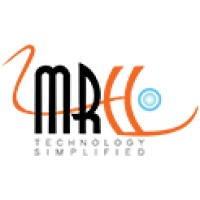
The Impact Of STEM Learning In K-12 Education
As our world faces increasingly complex challenges, from environmental crises to healthcare availability, the need for creative problem-solvers has never been more urgent. This is where STEM learning in K-12 education comes into play, evolving to equip students with the tools to tackle real-world issues head-on.
Far beyond the classroom, K-12 STEM education is inspiring young minds to address global challenges such as climate change, healthcare accessibility, and sustainability through hands-on, project-based learning. These approaches are shaping the next generation of leaders, innovators, and thinkers, preparing them to make a tangible impact on the world. This article explores how innovative approaches in STEM learning are making a significant impact in addressing these global challenges.
The Evolving Role Of K-12 STEM Education In Solving Global Challenges
STEM education has come a long way from focusing solely on science, technology, engineering, and mathematics principles. Today, K-12 STEM education emphasizes real-world applications and interdisciplinary learning that addresses the complexities of global issues. Schools across the U.S. are increasingly adopting innovative curricula that align with global challenges such as climate change, healthcare, and sustainable technology, preparing students from an early age to contribute to solutions.
1. Addressing Climate Change Through STEM
One of the most urgent global challenges is climate change, and STEM learning in K-12 is at the forefront of educating students on the importance of environmental sustainability. From studying renewable energy sources to understanding the impact of carbon emissions, K-12 STEM education is helping students grasp the scientific principles behind environmental issues.
Students are being introduced to projects that involve designing energy-efficient buildings, water conservation systems, and solar-powered technologies. These hands-on experiences not only make science and engineering concepts more engaging but also prove to students how their learning can lead to real-world solutions for mitigating climate change.
By connecting STEM with environmental responsibility, students are learning that they have the power to enact change, fostering a generation of environmentally conscious innovators.
2. Innovating Healthcare Solutions
The COVID-19 pandemic highlighted the critical role that STEM education plays in healthcare innovation. Today, students are learning how STEM can address healthcare challenges through cutting-edge developments in biotechnology, data analytics, and medical engineering.
For example, K-12 STEM curricula introduce students to the world of medical devices, telemedicine, and AI-driven healthcare solutions. Project-based learning opportunities allow students to explore how wearable technology can monitor vital signs and how Artificial Intelligence can diagnose diseases. These initiatives don’t just expose students to exciting career paths in healthcare; they also encourage them to think critically about how innovations can improve patient outcomes and address global health disparities. As healthcare challenges continue to evolve, the foundation laid by STEM education will help future generations lead the way in medical breakthroughs.
3. Promoting Sustainable Technology
Sustainability is no longer just a buzzword—it’s a global imperative. STEM learning in K-12 is evolving to help students understand how technology can be used to build a more sustainable future.
Students are working on projects involving green technologies, from designing energy-efficient transportation systems to researching ways to reduce plastic waste through innovative materials. By integrating STEM with sustainability, K-12 education is teaching students how to apply engineering and technology principles to create solutions for environmental conservation and resource management.
These cross-disciplinary STEM projects not only encourage creativity but also instill in students the importance of ethical responsibility when it comes to technology. As future engineers, scientists, and innovators, today’s students will be better equipped to design sustainable technologies that benefit society and protect our planet.
How To Tackle Global Challenges Using STEM Learning
At the heart of this evolution in K-12 STEM education is project-based learning (PBL). Rather than simply teaching theory, PBL encourages students to engage in real-world problems and find practical solutions using STEM principles. PBL allows students to immerse themselves in challenges that matter—whether it’s developing a prototype for a sustainable energy solution or designing a healthcare device to assist in rehabilitation.
Project-based learning encourages critical thinking, collaboration, and creativity, making it an ideal way to prepare students for the complexities of global issues. PBL also bridges the gap between academic learning and real-world application, showing students that their STEM education can have a direct impact on the world around them. By fostering a hands-on learning environment, K-12 schools are not only teaching students the basics of STEM but also inspiring them to become problem-solvers who’ll make a difference in the world.
-
Cross-Disciplinary STEM Approaches For Maximum Impact
Global challenges are rarely confined to one area of expertise. Climate change, healthcare innovation, and sustainability require a cross-disciplinary approach, and K-12 STEM education is increasingly reflecting this reality. By blending science, technology, engineering, and mathematics with other subjects like social studies, language arts, and ethics, students gain a holistic understanding of the issues they’re addressing.
For example, in studying climate change, students might combine data analysis (math), environmental science, and engineering principles to design solutions, while also incorporating discussions on public policy and ethics. This cross-disciplinary approach ensures that students understand the multifaceted nature of global challenges and are prepared to think critically and creatively when addressing them.
Inspiring The Next Generation Of Global Problem-Solvers
As the world becomes more interconnected and the challenges we face grow more complex, the need for innovative problem-solvers has never been greater. STEM learning in K-12 is evolving to meet this need, equipping students with the skills, knowledge, and creativity required to address global challenges head-on.
Through hands-on, project-based learning and cross-disciplinary STEM approaches, K-12 schools are inspiring students to think beyond traditional academic boundaries and apply their learning to real-world issues. Whether it’s tackling climate change, innovating healthcare, or creating sustainable technologies, K-12 STEM education is shaping a generation of students who’ll lead the way in building a better, more sustainable world.
